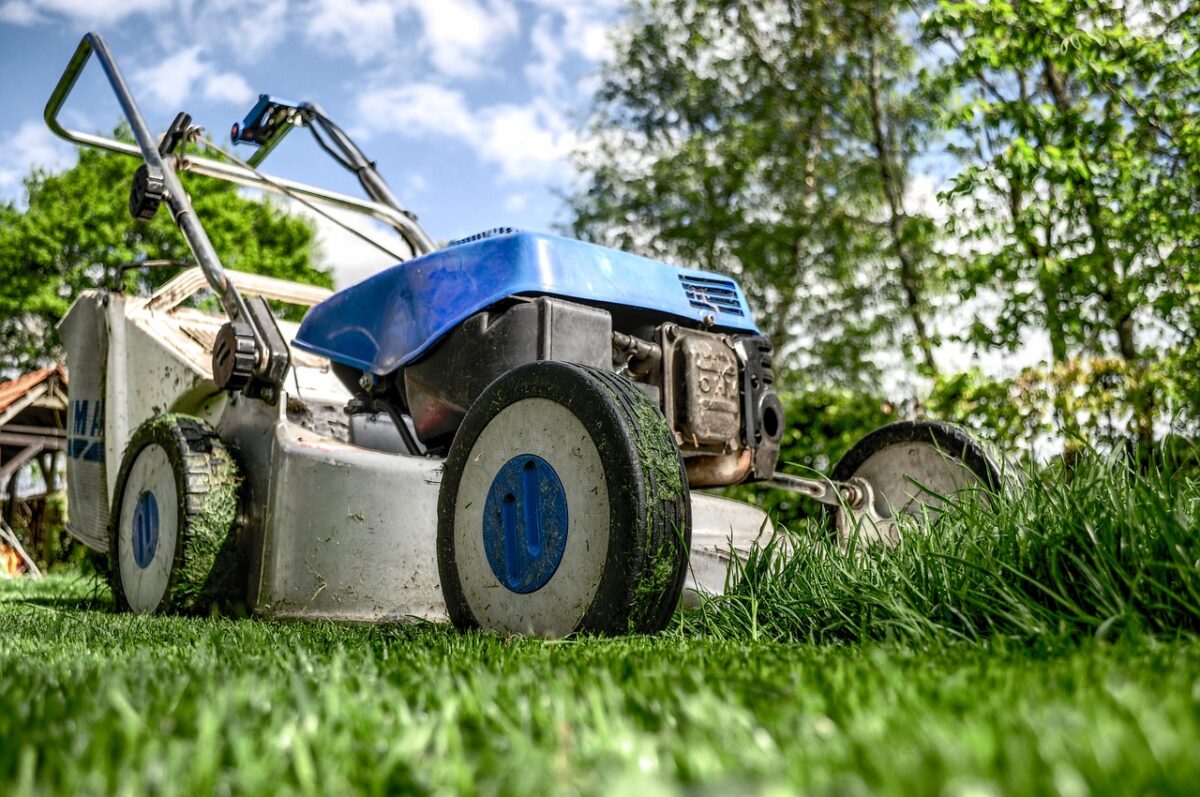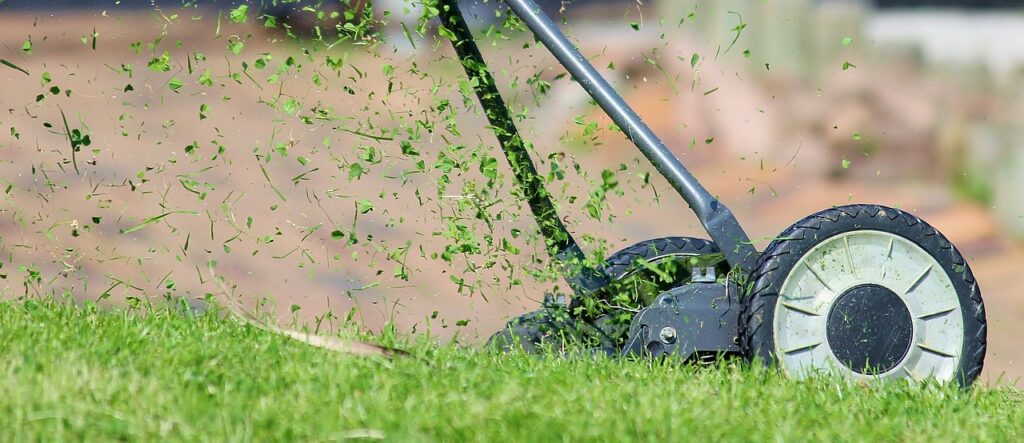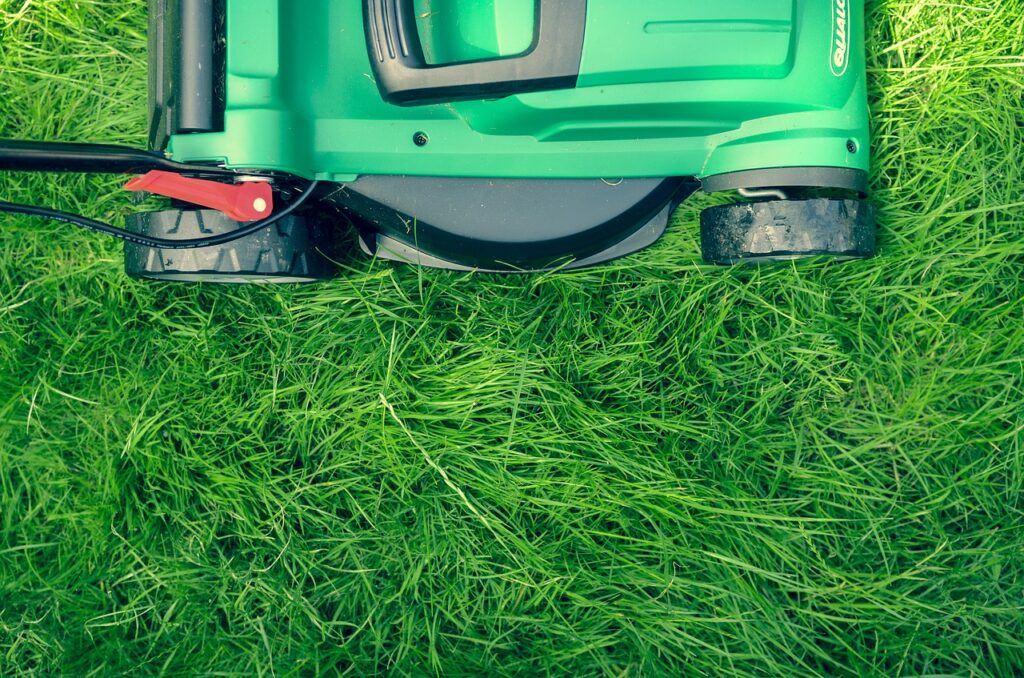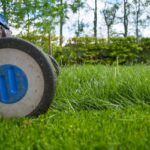
Mowing after overseeding – When to mow & cut grass after overseeding?
Who doesn’t like a beautiful and lush lawn? It is pleasant on the eyes, adds value to our homes, and fills us with joy and happiness every time we walk on our well-kept lawn. But to maintain the beauty and greenery of our yard, we need to perform regular upkeep. Overseeding is one of the secrets behind an evergreen property. It is a very simple process where you spread the seeds over an existing lawn. Over time lawns tend to lose their lushness, and overseeding helps maintain the grassiness. When done right, it keeps your yard looking young and vibrant forever.
When To Mow & Cut Grass After Overseeding?
There are several factors that you to consider before mowing after overseeding. These are:
Growth of the grass
First of all, you need to determine the height you want for your turf. Professional landscapers also advise not to cut more than one-third of the grass blade’s entire length. If you wish to have a 3-inch height for your lawn, you need to wait till the grass grows up to 4 ½ inches high before you mow after overseeding. It would be best to keep in mind that grass grows very fast when you cut them shorter, calling for frequent mowing.
The grass variety
Different kinds of grass germinate at different speeds, meaning the right time for mowing after overseeding is different for each type of grass. So you need to identify and learn more about the germination period of the grass you use for overseeding. Once it reaches the desired height, you can begin mowing the lawn.
Mowing Seasons
Make sure to leave the lawn shorter than 4 inches before winter to prevent matting. If you are using a cool-season grass variety, you can mow them in spring and fall, whereas warm-season grasses can be clipped in summer.It would be best to have a mowing schedule for the entire year, depending on the height. You can take a break from mowing during fall when the lawn goes into dormancy. When it comes to mowing after overseeding, the time of the day also matters. Don’t trim when the grass is wet; wait for it to dry up. This is because damp grass does shear off as quickly as dry grass. Usually, the dew on the grass dries up late in the morning. If you mow when the grass is wet, there is a high risk of pulling the entire grass blade out of the ground instead of getting a neat trim.
How to mow after overseeding?
Here is a step by step guide to mowing after overseeding:
- Let your newly seeded lawn rest for a minimum of two weeks or sometimes longer (depending on the grass type) before you mow it. This period helps the grass grow strong roots.
- Mow the grass around 3 inches high 5 to 6 weeks after the seeds germinate. Yes, you will be mowing a little higher than usual, but the taller grass blades will shade the soil and help retain the moisture for a longer time.
- Be careful not to turn your mower too aggressively on the new blade of grass because it might pull out the delicate grass. Wherever possible, try to take broader, and rounder turns. You need to follow this tip, especially when you are using a ride-on mower. If your lawn is vast and expansive, we recommend using a walk-behind mower for the first few months after the seeds germinate. It will take more time and effort, but it will be gentle on your new grass and encourage the healthier growth of grass.
- Take care not to mow when the ground is mushy and soft. When the soil is muddy, it can cause your feet to sink into it, which will ruin an overseeded lawn. The new blades of grass are delicate and might get easily damaged. To prevent them from getting buried into the ground, you need to keep off the lawn when it’s wet and muddy.

When To Mow After Overseeding Fescue?
Fescue grass needs less maintenance when compared to cool-season grasses that are usually used in lawns. This variety of grass needs less mowing, less fertilizing, and moderate watering. This is the best grass variety if you want an easy-to-maintain lawn. Within the Fescue grass, there are several species, and the care and maintenance are different for each species.
Overseeding Fescue
Before you overseed a fescue lawn, you need to mow the existing grass close to the ground. Next, remove all the debris and fertilize the space for the new seeds. Once you seed the fescue, you need to wait for 21 days for the seeds to germinate. The germination time depends on the weather and temperature. Fescue does not grow in climates that are not between 60 – 75 degrees. The temperatures are obviously going to vary, so patiently wait for the seeds to germinate. During this period, make sure to water the lawn consistently so that the soil doesn’t dry up. Inconsistent watering or improper irrigation system can further prolong the germination of fescue seeds. Water is vital to help the fescue get adequately rooted.
Mowing after overseeding fescue
Under the right conditions, fescue can grow really tall in less time. You should mow your fescue lawn at a height of 3 inches. Keeping this height gives the lawn an even texture and makes it look good. For athletic fields, you can keep the height somewhere between 2 to 3 inches. Once you have mowed the lawn, leave the clippings behind.
If your fescue lawn is in a warmer area, don’t mow the grass more than 1 ½ inches as it helps retain moisture and prevent the soil from drying out in the hot sun. The fescue grass has also been seen to thin out when it is mowed too low. When you mow after overseeding, keep an eye out for pests and pest damages. Check the density, health, and color of the grass.

Mowing mistakes to avoid
1. Never mow too frequently
Cool-season grass species such as ryegrass, fescue, and bluegrass may not need frequent mowing in the summers. These types of grasses grow abundantly during the spring and fall seasons. Determine the frequency based on the growth of your grass.
2. Mowing too low is bad
We have already mentioned the ideal mowing length. Every professional landscaper also recommends this height. But for some reason, most homemakers make the mistake of mowing for than the recommended length. This, of course, is to reduce the frequency of the task. But by doing so, you are making your lawn more vulnerable to weeds and less compatible with the dry and hot seasons.
3. Don’t be in a hurry
Most of us want to finish the mowing work as soon as possible due to time constraints. This could lead to aggressive and fast mowing. And when you rush, you could end up with an uneven and untidy lawn.
5. Don’t Mow the Same Way all the time – Experiment with alternate patterns
When you follow different patterns during every mowing session, the grass tends to grow healthier and straighter. This is because grass blades usually grow in the direction in which they are cut. Therefore alternating patterns help the grass grow in an upright position instead of inclining towards the sides. It also prevents ruts from forming in the ground from mower wheels.
6. Don’t Mow with blunt Mower Blades. Keep the blades sharp
Sharpen your mower blades every other month. Using dull blades to cut grass will cause tears instead of cutting the grass evenly and cleanly. Tears in grass blades make your lawn vulnerable to diseases and pests. Several landscaping stores offer lawn blade sharpening services. If you haven’t ever sharpened the blades, get them serviced right now and see the difference in mowing quality.
7. Don’t discard the clippings – leave them on the lawn as mulch
We all love to keep our lawns looking clean and tidy; hence most homeowners make the mistake of bagging up the clippings and discarding them. But many plant experts and landscaping artists recommend leaving the grass cuttings on the lawn to act as mulch. The mulch retains moisture in the soil and releases nutrients into the soil as they gradually decompose.
Handling Weeds after overseeding
Weed seeds are always present in the soil; they might stay dormant for a while, but they are there. When the time and the conditions are right, they sprout. Weeds can pop out among the new grass blades, but you should not act on them immediately, as they can harm the fresh, sensitive grass. The golden rule is to wait till you have mowed after overseeding at least four times before you use weed-control products on your lawn. Some weedicides are exclusively designed to be used during seeding; you can use them. But always remember to follow the instructions on the label.

